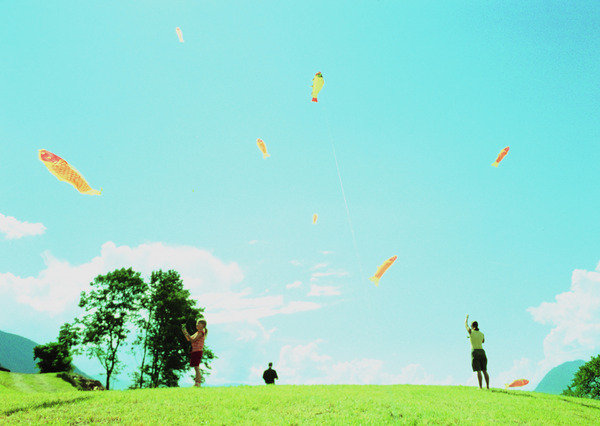Shimabuku
dal 19/11/2014 al 10/1/2015
Segnalato da
19/11/2014
Shimabuku
Contemporary Art Gallery, Vancouver
When Sky Was Sea. The exhibition exemplifies the curiosity and freedom of expression. The artist uses installation, video, photography, drawings, sculpture and events alike to convey his intense fascination with the natural world and the countless manifestations of human culture within it.

The Contemporary Art Gallery presents the first large-scale survey exhibition in North America of work by renowned Japanese artist Shimabuku. Demonstrating the breadth of the artist’s practice, works reveal an essential correspondence to things elsewhere in a wider world, insisting on our grasp of the continuity that exists between art and (non-art) life. As he travels the world, interacting with strangers, and conversing with nature, Shimabuku instigates moments of poetry, humour and surprise.
Including pieces dating back to the mid-1990s, when he first emerged as an artist in Japan, through to presenting a wide variety of more recent work for which he has since become internationally celebrated, the exhibition exemplifies an extraordinary curiosity and freedom of expression. Shimabuku uses installation, video, photography, drawings, sculpture and events alike to convey his intense fascination with the natural world—equally the animal and vegetable realms—and the countless manifestations of human culture within it. His artistic proposition is essentially one of storytelling and discovery. He encourages us to assume an “alien” identity whereby we break with established habits of perception and enjoy experiences as if they are happening to us for the first time.
From the beginning, incongruity has characterised much of Shimabuku’s work, seen in early performances such as Tour of Europe with One Eyebrow Shaved (1991) or Christmas in the Southern Hemisphere (1994), the gentle surrealism of the works is compelling. Shimabuku is not so interested in discovering the reasons why, instead preoccupied, through a joyful approach, with unions of myth or mystery and the everyday. This is epitomized by Something that Floats / Something that Sinks (2008), a work through which the artist draws our attention to the fact that some pieces of fruit and vegetables float in water or appear to swim, while others sink. It is wonderful and ostensibly miraculous.
The inversion of the way things are conventionally seen to be is crucial to Shimabuku’s practice. He is interested in what is normal being made strange and often picks up the theme of the journey in his work, the means by which difference occurs through translation in both time and space. The photograph Cucumber Journey (2000) commemorates a two week performance travelling slowly north on British canals while learning to pickle vegetables. He has stated, “I think cooking and art are similar. They are both about unexpected meetings of far-away ingredients, to create something delicious, something good”. In his video Then, I decided to give a tour of Tokyo to the octopus from Akashi (2000) we see him with an octopus in a fishtank taking a Shinkansen train to Tokyo. There they make touristic visits to the Tokyo Tower and the famous Tsukiji fish market before getting back on the train for a return trip so that the octopus can be submerged again, back home in the Akashi Sea. The artist refers to this work as his Apollo project, involving as it did an adventure far from the natural habitat of the octopus – the fishtank being the equivalent of a spacecraft – isolated from the surrounding atmosphere so that the octopus could survive its voyage into unfamiliarity. We easily imagine how weird our world must have seemed to the octopus whilst being reminded of how “wonderful” such a creature is from our point of view.
The involvement of others, not only in the consumption but also the production of his work, marks Shimabuku out as a major figure in the recent development of relational art practice. He has produced many events, interventions and performances that are very open to audiences, to the point that they become active participants. When the Earth Turned to Sea (2002) requires dozens of volunteers to fly Chinese fish kites, the result is a shoal of fish in the sky – or a flock of fish – and so the world is turned upside down. Passing through the rubber band (2000), similarly invites gallery visitors to step through the stretching loops, a simple act of fun and wonder via the most modest of means, as in all of his works the marvellous emerges from the mundane.
The exhibition is complementary to and produced in partnership with Ikon Gallery, Birmingham, UK and Kunsthalle Bern, Switzerland.
Image: Shimabuku, When Sky Was Sea
Press Contact:
Jill Henderson at j.henderson@contemporaryartgallery.ca
Opening: Thursday, November 20, 7-10pm.
Contemporary Art Gallery
555 Nelson Street
Hours: Tues – Sun: 12 – 6 pm.
Free Admission



